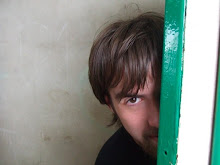It wasn't long ago that a small news item declared to the country that the Brecon Beacons has been designated a Dark Sky area. This means that the effect of light pollution is minimal, allowing the night sky to shine through on a cloudless night. This is all well and good as long as the clouds stay away, but in such a wet land as Wales, the rain and the mobile rain delivery system are never far away.
The One show did a snippet on the Beacons new designation a few weeks ago and interviewed a photographer who specialises in time-time photos and time lapses, mainly based in the beacons.
I've long admired time-lapse photography, creating gracefully arcing star trails over a number of hours to show the rotation of the earth and how what we see at the start of the night is different to the end.
In this spirit I went out for a long walk one night, all the way out of my back door, down a full 4 steps and then half a dozen paces into the garden and set up my camera and tripod in the hope of capturing the night sky. I had attempted this before in Surrey, but the light pollution from Guildford, and maybe even London stopped me from getting the balanced exposure that I wanted to achieve.
My first attempts were a bit sketchy. I tried to take single 15 minute exposures, which would end up a little shaky and noisy. These needed extensive work to make the stars stand out against the light pollution and weren't all that great.
For my next set I decided to let my laptop control the camera's shutter, set a timer and let it go for a few hours. The only problem with this approach is that I didn't want to leave my camera and laptop outside, so i turned off nearly all the lights in my house and stuck the camera in the window hoping that the window wouldn't show too many reflections. unfortunately double glazing means double the reflections, and in most of the photos you could tell the camera was in a room with curtains.
Thanks to the new release of Magic Lantern for Canon EOS 7D (http://www.magiclantern.fm) that includes an Intervalometer, I was able to take lots of photos at regular intervals without touching the camera, hooking it up to a laptop or buying an expensive shutter remote.
One evening I came home to a clear sky, and expected it to stay that way for the rest of the night so i set my camera up in the garden and set it to take a 15s exposure every 20s for a few hours (until I wanted to go to bed basically).
I mashed the 500 or so photos together, lowered the saturation a bit to get some of the remaining street light out of the picture, and voila, my first star trail time-lapse photo.
The land of my fathers weeps
7 years ago
















